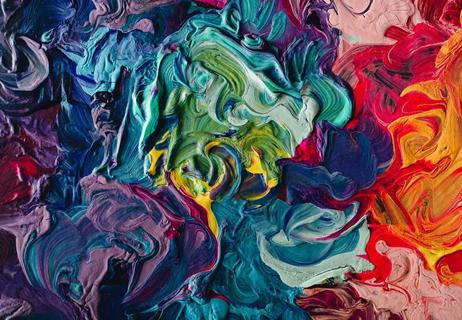Here's when to worry about your nasal mucus changing hues

Nasal mucus, otherwise known as snot. We all have it — and we all have a lot of it. Experts have found that you produce and swallow about 500 or 600 ccs of nasal mucus every single day.
Advertisement
Cleveland Clinic is a non-profit academic medical center. Advertising on our site helps support our mission. We do not endorse non-Cleveland Clinic products or services. Policy
Nasal mucus serves as a potent barrier around areas of your body that are ripe for infection. “The inside of your nose, as well as your upper air digestive tract in the head and neck area, are very moist environments,” says ear, nose and throat specialist Raj Sindwani, MD. “Mucus serves a major role in trying to protect the lining and keep it moist.”
In your nose especially, snot is your first line of defense in terms of preventing infections and fending off unwelcome things that might want to enter your body. “It traps particles and organisms, so the bacteria or debris that we breathe in doesn’t go directly into our lungs,” Dr. Sindwani says.
However, the color of this snot can tell you a lot about what’s going on inside your nasal passages — and although doctors rarely use nasal mucus as the primary diagnosis of disease, it can shed light on other conditions. Dr. Sindwani shares what the various shades of snot could mean for your health.
Snot color can tell you many things, including whether you have allergies, a nosebleed, a cold or a sinus infection. However, changing snot color is almost a bigger indicator that something is up with your health.
“If your snot is changing color, you need to see what else is going on,” Dr. Sindwani says. “It’s the idea that you were doing fine, nothing was bothering you and then something changed. You’ll want to look more holistically at what else might have changed. Are you feeling unwell? Did you get a new pet or other significant change in your environment?”
Advertisement
However, Dr. Sindwani notes that snot color — or changes to snot color — is just one sign of a potential health concern. The consistency of your snot could also be a warning sign. “If it’s thicker, that could represent your hydration status, such as being behind in your fluid intake, or having too much dehydrating coffee or sodas,” he says.
How much snot you’re producing can also be telling. “If it’s more copious, meaning more of it, that might be something that’s important to note also,” Dr. Sindwani says. “That can reflect hydration and for some people, that may reflect an exposure to something that was irritating, like perfume or cigarette smoke. Or it could even represent allergies or an allergic exposure.”
Here’s the meaning of each snot color:
Generally, you’re in the normal range, although allergies can also present like this. Straight mucus is mostly water, with proteins, antibodies and dissolved salts. Your nasal tissues produce it 24/7. Most of it flows down the back of your throat to be dissolved in the stomach.
This can mean you’re congested. Your nose has swollen, inflamed tissues that are slowing the flow of mucus, causing it to lose moisture and become thick and cloudy. This can be a sign of a nasal infection or cold.
This can mean a cold or infection that’s progressing. The yellowish tinge comes from white blood cells that rush to the site of the infection and then are swept away after working to fight it off.
“Yellow or green snot can sometimes mean that you have an infection,” Dr. Sindwani says. “But remember that there are other things that go along with that color, of course — including how you’re feeling overall or if you have a fever.” Colds inevitably last 7-10 days. Hunker down and wait it out with supportive care tactics as needed.
Your immune system is really fighting back and your mucus is thick with dead white blood cells. If you’re still sick after about 10-12 days, you may want to see a doctor. It could be sinusitis, a bacterial infection that is treated with a round of antibiotics. If you’re feverish or really sick, see a doctor soon.
“You can also get something called chronic sinusitis, which is a longer-term inflammatory illness, where you’ll have some symptoms of a sinus infection for months,” Dr. Sindwani says. “This isn’t just discolored mucus. It can be post-nasal drip. It could be facial pain, pressure, congestion or difficulty breathing, or a change to your sense of smell, and feeling unwell.”
However, you can’t really tell based on snot color alone whether an infection is viral or bacterial. “It’s more by how long you’ve felt sick and what your symptoms are,” Dr. Sindwani says. “Usually after about seven days, if you have that yellow or green snot, and you’re not feeling well, that’s when we might consider giving you a course of antibiotics.”
Advertisement
Your nasal tissue in the nose has somehow become broken — perhaps because it’s dry, irritated or experienced some kind of impact. “Full-on red could be a nosebleed related most likely to trauma, or possibly infection,” says Dr. Sindwani.
However, he adds that this color isn’t always cause for concern. “A few specks of blood or a pinkish hue mucus may not be a big deal. That could be just damage or irritation of the lining. For example, when we’re sick and we’re blowing our nose a lot or you’re rubbing your nose a lot, that can cause a couple of blood vessels to break which might give you a little bit of bleeding.”
This shade could be old blood, but likely it’s something inhaled, like dirt, snuff or paprika.
“If you see black snot you could be breathing in something like debris at a workplace and that might be collected in the mucus of your nose,” Dr. Sindwani says.
Additionally, if you don’t smoke or use illegal drugs, black mucus may mean a serious fungal infection. “Not to be overly alarmist, but there are some fungal infections that can show black snot that can be very, very serious,” Dr. Sindwani says. “But luckily they’re exceedingly rare.”
In fact, these infections usually occur in people with compromised immune systems. If you are one of them, you’re probably already seeing a doctor. If not, make an appointment.
Advertisement
Not always, says Dr. Sindwani. Snot could change color (or you could have more of it) if you have an abundance of bacteria growing in your nose. “Snot can be impacted by bacteria,” he says. “And that bacteria can be hanging out in your nose. It’s not until the bacteria actually gets into the lining or tissues of your nose that we actually call it an infection.”
Determining if you have an infection comes down to how you feel and how long you feel that way. “If you’re feeling perfectly fine, generally speaking, that’s not really a significant infection in most cases,” says Dr. Sindwani. “And we may choose not even to treat you with any antibiotics, even though that might go on for some time.”
Mucus isn’t stationary. In fact, mucus is always on the move around your body, in a predetermined pattern. It begins in the sinuses and then travels into your nose, down the back of the nose and throat, and then ends in the stomach.
Dr. Sindwani says if mucus did stay in one place, the bacteria within it could cause infections.
“Mucus traps bacteria,” he notes, “but then it gets pushed away into your stomach. The bacteria can be taken care of there, so it doesn’t infect you or harm you in any way. If mucus were to sit around and be stagnant, the bacteria that are in it would continue to proliferate, because mucus is kind of a food for them. This overgrowth of bacteria could then get into your nasal and sinus tissues and cause an infection.”
Advertisement
In addition to keeping potential infections at bay, mucus helps your nose function properly. For example, mucus traps chemicals called odorants, which represent different smells, and directs them to your smell receptors which live high up in the nose. That keeps your sense of smell in tip-top shape.
The nose also humidifies and warms the air we breathe with the help of mucus. “Mucus mainly adds water or humidification to the air we breathe, so it doesn’t dry out our passages or lungs,” says Dr. Sindwani.
Learn more about our editorial process.
Advertisement

They serve a purpose, but too much is uncomfortable

Keeping your baby’s airways clear of mucus helps with breathing and feeding

Sneezing, coughing and clear mucus shouldn’t be ignored

Using a saline solution, they help relieve sinus pressure and remove excessive mucus

For centuries, people have been drinking mullein tea for respiratory conditions

Not all rainbows have gold at the end — the ones our bodies produce offer insight into our health

Mucus removal tips from a pediatrician

Most recommended precautions center around minimizing bruising or swelling

Type 2 diabetes isn’t inevitable with these dietary changes

Applying a hot or cold compress can help with pain